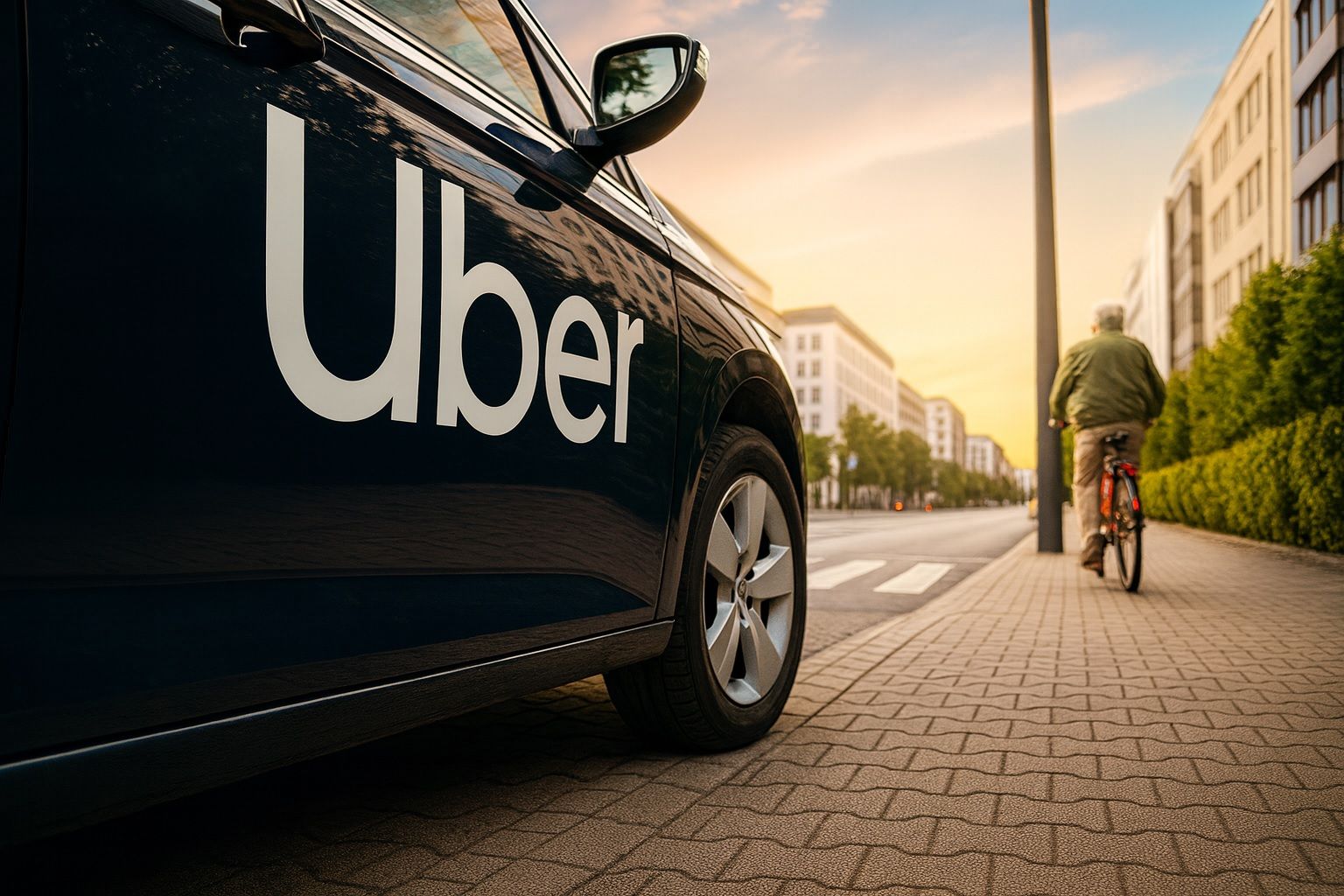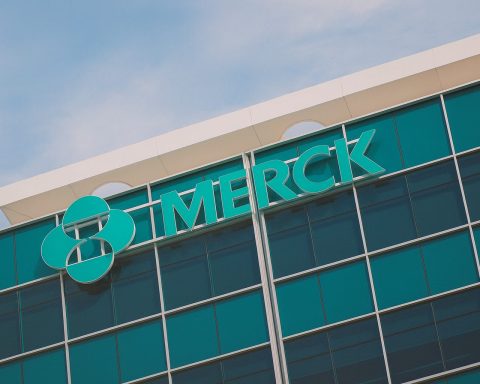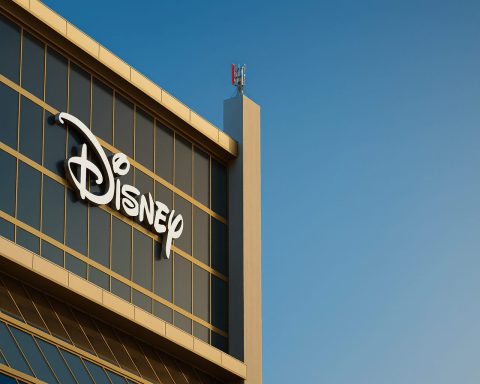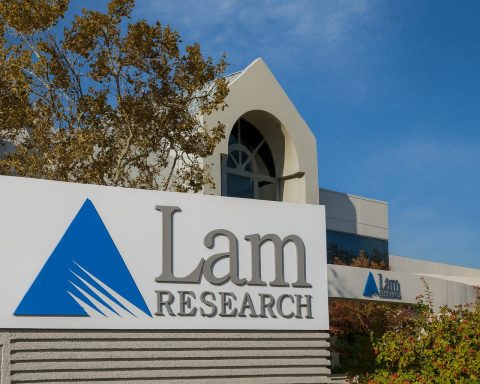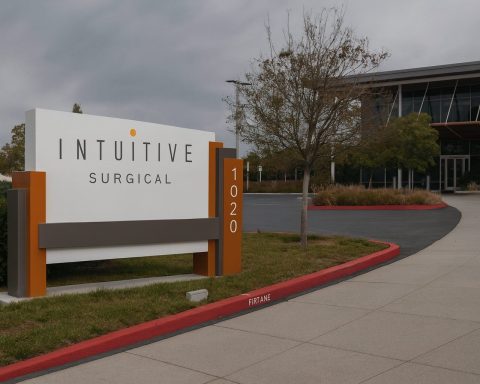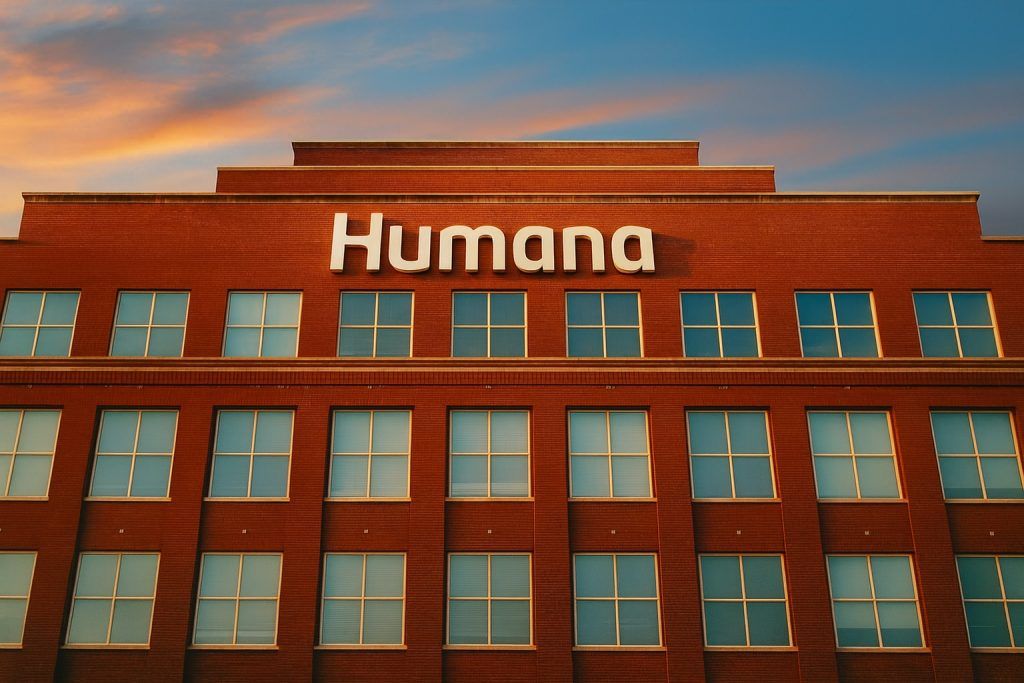- Guggenheim initiated Uber coverage with a Buy rating and $140 price target [1] [2]. The firm highlights Uber’s “industry-leading” network, technology and brand as key strengths [3].
- Autonomous vehicles are a major focus: Guggenheim projects AVs will handle ~20% of U.S. rideshare trips by 2035 [4]. The analyst noted that both bull and bear cases on AVs (expansion vs. disintermediation) “will prove true,” but Uber’s scale should win out [5].
- Uber’s Delivery segment is “re-accelerating” after a period of slower growth, with sustainable double-digit growth expected in food, grocery and retail delivery [6] [7]. New initiatives (e.g. subscriptions and ads) add tailwinds.
- Uber shares trade around $94 (Oct 14 close) [8], up sharply from pandemic lows (214% gain since 2020 [9]). Analysts’ consensus 12-month target is about $105–107 [10] [11], implying mid-teens upside. (The high-end target is $140 [12].)
- Recent catalysts include strong Q3 results (EPS $0.63 vs. $0.61 est., +18.2% sales growth [13]), a new Outperform/$130 forecast from Mizuho [14], and strategic moves – e.g. Uber’s acquisition of AI startup Segments.ai [15] and a nationwide SNAP-EBT grocery deal with Aldi [16].
- Innovation boost: Uber in Sept. 2025 announced a drone delivery partnership with Flytrex to drop Uber Eats orders in minutes [17]. Uber’s own AV chief notes this is about “bringing the speed and sustainability of drone delivery to the Uber Eats platform” [18]. Gig-economy peer DoorDash got its own Buy note ($330 target) as Guggenheim’s #2 pick behind Uber [19].
Guggenheim’s Bullish Outlook
On Oct. 15, Guggenheim’s Taylor Manley initiated coverage of Uber (NYSE: UBER) with a Buy and a $140 price target [20] [21]. Manley praised Uber’s “industry-leading network, technology, and brand equity,” noting that Uber’s global multi-platform network (rideshare, Eats, Freight, etc.) is now three times larger than any rival [22]. With trailing revenue up ~18% year-over-year, Guggenheim sees Uber’s scale as a huge moat. The note emphasizes two growth engines:
- Autonomous Vehicles (AVs): Guggenheim projects that self-driving cars will account for about 20% of U.S. rideshare by 2035 [23]. While some investors worry AVs could disintermediate Uber (drivers bypassing the app), Guggenheim argues both sides hold true: AVs will be an expansion opportunity and a disruption risk, but Uber’s massive demand will absorb it. In short, more robotaxis on the road could ultimately mean more business for Uber’s platform.
- Delivery Business: The firm sees Uber’s food and goods delivery segment finally re-accelerating. After earlier headwinds, Uber Eats (and related grocery/retail delivery) is now growing again in the high-teens. Guggenheim calls this business “relatively overlooked by investors” and expects continued sustainable double-digit growth as Uber builds grocery partnerships, bundles (subscriptions) and ad services [24] [25]. For example, Uber just struck a deal with supermarket chain Aldi to offer groceries (including EBT acceptance) on Uber Eats [26].
Analyst benches have mixed but improving views. Wells Fargo and Sanford Bernstein have recently upped targets into the $110–130 range, and even Uber’s September results surprised on the upside [27]. Notably, Guggenheim’s $140 target is based on about 24× its 2027 EV/EBITDA estimate, which is ~80% above the S&P 500 valuation but actually a slight discount to high-growth peers (e.g. DoorDash) [28]. In the Wall Street community, consensus is a “Moderate Buy” – out of ~42 analysts, 32 rate Uber a Buy [29], and the mean 12-month target is roughly $105 [30] (as of mid-Oct 2025).
Innovation and Expansion Efforts
Uber’s growth thesis extends beyond cars and bikes. Recently it has been investing in cutting-edge delivery tech that could move the needle over the next 1–2 years. In mid-September 2025, Uber announced a partnership with drone operator Flytrex to launch Uber Eats drone delivery trials in select U.S. markets [31]. This deal – Uber’s first direct investment in drone technology – will let customers tap “order” on the app and have a drone pick up food and lower it to their doorstep. Uber’s VP of Autonomous Mobility, Sarfraz Maredia, said the tie-up is about “bringing the speed and sustainability of drone delivery to the Uber Eats platform, at scale, for the first time” [32]. Flytrex’s chairman Noam Bardin added that drones are “the future of food delivery – fast, affordable, and hands-free” [33]. If successful, Uber hopes drone drops will cut meal delivery times to 10–15 minutes (from the typical 30–45 min) [34], while reducing vehicle traffic and emissions. (Even with high per-delivery costs today, the companies argue this is an “inflection point” for on-demand logistics.)
On the ground, Uber also continues to expand its core business. In October it acquired Segments.ai, a Belgian startup, to bolster its AI/data-labeling capabilities for self-driving and mapping projects [35]. In its freight business, Uber named industry veteran D’Andrae Larry as the new Chief Commercial Officer to spearhead a reorganization of Uber Freight [36]. These moves, combined with Uber’s push into areas like subscriptions (Uber One) and point-of-sale for restaurants, are meant to diversify revenue beyond just ride-hails. Investors will be watching how these initiatives translate into growth.
Meanwhile, competition remains intense. Guggenheim actually incorporated DoorDash into its report – awarding DoorDash (NASDAQ: DASH) its own Buy rating with a $330 target – and explicitly calls DoorDash its “second pick” behind Uber [37]. That note praises DoorDash’s expanding grocery/retail portfolio and recent Deliveroo deal. For Uber, the key is staying ahead: the firm remains the world’s largest rideshare platform by far (in valuation and market presence), but now rivals from groceries to automation are hot on its heels.
Stock Performance & Forecast
Investors have pushed the stock considerably higher in 2025. Uber closed around $94.21 on Oct. 14, 2025 [38] – near its 52-week high – giving it a market cap of about $196 billion [39]. That price reflects roughly a 200–220% gain since early 2020 [40] (as Uber recovered from pandemic lows). With shares near $94, the Guggenheim $140 target implies ~50% upside. By contrast, analysts’ average 12-month target of ~$105 [41] suggests more modest gains (consensus upside ~12%).
The bullish camp points to Uber’s expanding addressable market. The rideshare industry is still only a small fraction of total transportation spend, and global food delivery is projected to grow rapidly. Uber’s entrenched brand (now frequently ranked among the world’s most valuable), along with its forays into autonomous driving, robotaxis, and drone delivery, give it optionality. In other words, if any of these bets pays off, Uber’s core earnings could accelerate. Guggenheim’s model assumes mid-teens revenue growth (15%+ CAGR through 2028 [42]) and continued margin expansion as leverage builds.
On the cautionary side, Uber faces challenges: persistent losses (though narrowing), regulatory hurdles (especially for autonomous vehicles and gig workers), and stiff competition. Some analysts who remain neutral argue Uber is fairly valued around $90–100 given these risks. But recent quarters have delivered better-than-feared results – Q3 2025 EPS was $0.63 (vs. $0.61 estimate) on 18.2% revenue growth [43] – which helped fuel upgrades. Indeed, Mizuho boosted its rating to Outperform with a $130 target [44], and Wells Fargo’s Overweight view likewise raised targets into the low $120s over the summer [45] [46].
In summary, experts are growing more optimistic on Uber. Guggenheim’s analysis spotlights the company’s dominant market position and exciting new growth drivers [47] [48]. If Uber can translate its technology bets into higher volumes, the stock could climb toward Guggenheim’s lofty $140 goal in the next 1–2 years. For now, the stock sits at a decade-high, and investors will be watching earnings and execution closely to see if the bullish case holds.
Sources: The above analysis synthesizes recent media and filings. Key inputs include Guggenheim’s Oct. 15 research note [49] [50], market data from MarketBeat [51] [52] and StatMuse [53], recent analyst reports [54] [55], and industry news (e.g. Uber’s Flytrex drone initiative [56]). All statements are supported by cited sources.
References
1. www.investing.com, 2. www.tipranks.com, 3. www.tipranks.com, 4. www.investing.com, 5. www.tipranks.com, 6. www.investing.com, 7. www.tipranks.com, 8. www.marketbeat.com, 9. www.statmuse.com, 10. www.marketbeat.com, 11. www.gurufocus.com, 12. www.marketbeat.com, 13. www.marketbeat.com, 14. www.investing.com, 15. www.investing.com, 16. www.investing.com, 17. ts2.tech, 18. ts2.tech, 19. in.investing.com, 20. www.investing.com, 21. www.tipranks.com, 22. www.investing.com, 23. www.investing.com, 24. www.investing.com, 25. www.tipranks.com, 26. www.investing.com, 27. www.marketbeat.com, 28. www.investing.com, 29. www.marketbeat.com, 30. www.marketbeat.com, 31. ts2.tech, 32. ts2.tech, 33. ts2.tech, 34. ts2.tech, 35. www.investing.com, 36. www.investing.com, 37. in.investing.com, 38. www.marketbeat.com, 39. www.investing.com, 40. www.statmuse.com, 41. www.marketbeat.com, 42. www.investing.com, 43. www.marketbeat.com, 44. www.investing.com, 45. www.gurufocus.com, 46. www.marketbeat.com, 47. www.tipranks.com, 48. www.investing.com, 49. www.investing.com, 50. www.tipranks.com, 51. www.marketbeat.com, 52. www.marketbeat.com, 53. www.statmuse.com, 54. www.marketbeat.com, 55. www.gurufocus.com, 56. ts2.tech
